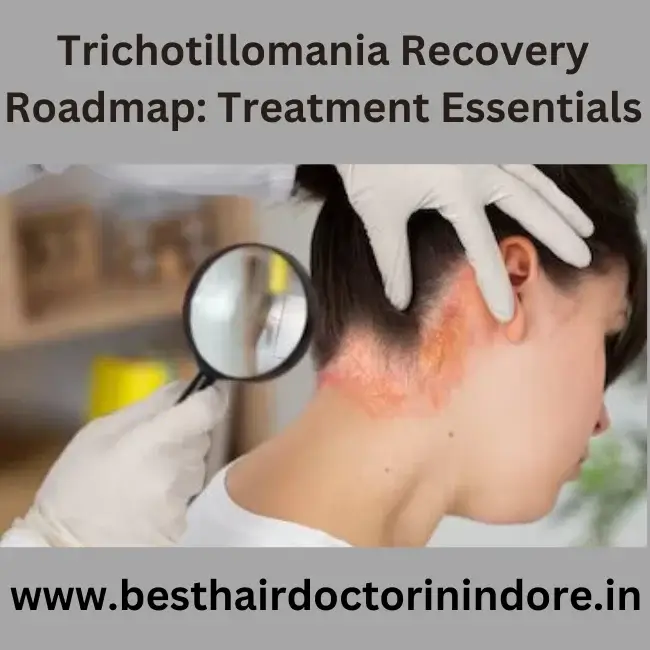Trichotillomania, often referred to as “trich,” is a challenging disorder characterized by the compulsive urge to pull out one’s hair, leading to noticeable hair loss and significant emotional distress. For those who struggle with trichotillomania, seeking hair fall treatment in Indore is often the first step on the path to recovery. In this blog post, we’ll explore the essential elements of a Trichotillomania Recovery Roadmap, helping individuals with trichotillomania and their loved ones better understand the treatment journey.
Table of Contents
ToggleUnderstanding Trichotillomania
The first essential step in the recovery roadmap is gaining a deep understanding of trichotillomania. This includes recognizing its symptoms, triggers, and how it impacts an individual’s life. Education can help reduce stigma and create empathy, making it easier for individuals to seek help.
Seek Professional Help
Effective treatment typically starts with seeking professional help. A licensed therapist or counselor experienced in treating trichotillomania can provide guidance, support, and evidence-based therapies tailored to the individual’s needs.
Cognitive-Behavioral Therapy (CBT)
CBT is a cornerstone of trichotillomania treatment. It helps individuals identify and challenge the thoughts, emotions, and behaviors associated with hair-pulling. CBT equips them with strategies to manage urges and develop healthier coping mechanisms.
Habit-Reversal Training (HRT)
HRT is a specific form of CBT designed to address habitual behaviors like hair-pulling. It involves awareness training, competing response practice, and social support to reduce and eventually eliminate the urge to pull hair.
Medication
In some cases, medication may be prescribed to manage trichotillomania symptoms. Selective serotonin reuptake inhibitors (SSRIs) and other medications can help reduce anxiety and compulsive behaviors.
Support Groups
Participating in support groups can be immensely beneficial. Connecting with others who have trichotillomania provides a sense of community and the opportunity to share experiences, coping strategies, and success stories.
Self-Care and Stress Management
Stress and anxiety often exacerbate trichotillomania symptoms. Practicing self-care and stress management techniques, such as mindfulness, exercise, and relaxation exercises, can help individuals reduce triggers and improve their overall well-being.
Journaling
Keeping a trichotillomania journal can be a valuable tool for tracking triggers, urges, and progress. It provides insights into patterns and helps individuals develop strategies to interrupt the cycle of hair-pulling.
Patience and Perseverance
Recovery from trichotillomania is rarely linear. Relapses can happen, but they don’t define the journey. It’s crucial to remain patient, acknowledge setbacks, and continue working towards recovery goals.
Celebrate Milestones
Recognizing and celebrating milestones, no matter how small, is essential for motivation. Whether it’s a day without pulling or an improvement in hair regrowth, each achievement is a step closer to recovery.
Conclusion
Trichotillomania recovery is a journey that requires time, effort, and dedication. The Trichotillomania Recovery Roadmap outlined here provides a foundation for treatment essentials. Remember that every individual’s path to recovery is unique, and it’s essential to tailor treatment strategies to specific needs.
If you or someone you know is struggling with trichotillomania, seeking professional help from hair fall treatment in Indore and following a well-defined recovery plan can lead to a life free from the compulsion to pull hair. Recovery is possible, and with the right support, individuals with trichotillomania can regain control of their lives and their hair.


